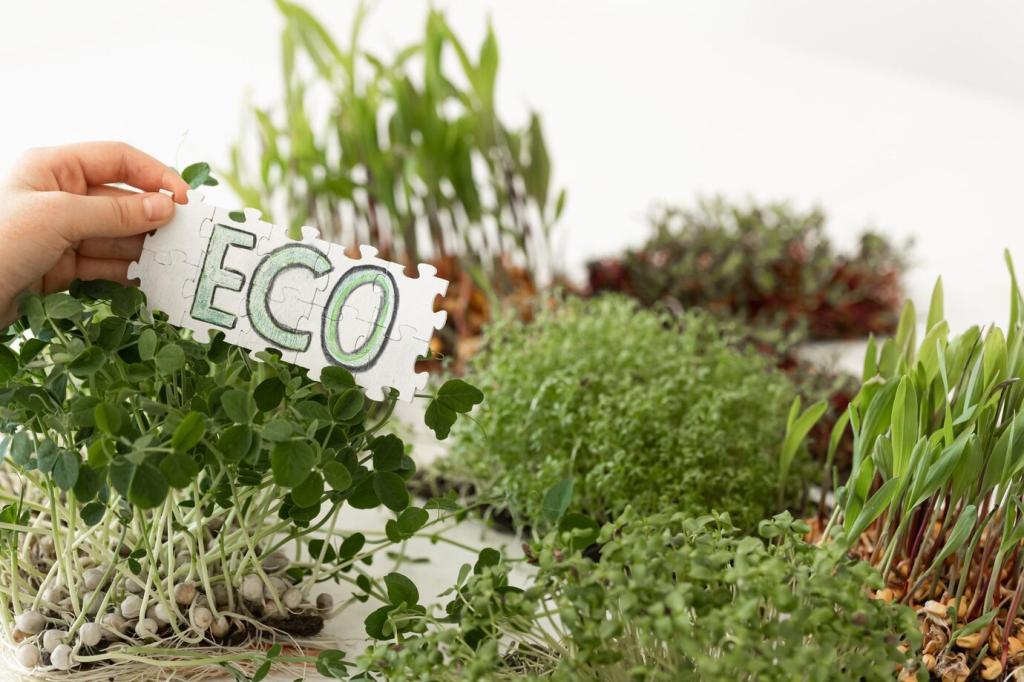How to Choose Energy-Efficient Windows
Chosen theme: How to Choose Energy-Efficient Windows. Step into a bright, comfortable future where your home stays cozy, quiet, and naturally lit—without wasting energy. This guide blends clear advice and real-world stories to help you pick windows that match your climate, style, and budget goals. If this resonates, subscribe for new tips and share your questions so we can tailor future posts to your home’s needs.

Decode the Label: U-Factor, SHGC, VT, and More
U-Factor: Your Insulation Backbone
U-Factor measures how easily heat escapes; lower numbers mean stronger insulation and greater winter comfort. Think of it like a warm sweater for your home. If your climate has cold seasons, prioritize a low U-Factor. Drop a comment with your location, and we will suggest a target range and real examples that match your weather patterns.
SHGC: Taming the Sun’s Heat
Solar Heat Gain Coefficient (SHGC) tells you how much solar heat passes through; lower values resist heat gain. In hot, sunny regions, choose lower SHGC to keep rooms cooler and reduce air conditioning strain. In colder climates, a moderately higher SHGC can boost passive warmth. Tell us your orientation—south, west, or mixed—and we will help tune SHGC for comfort.
Visible Transmittance and Air Leakage
Visible Transmittance (VT) shows how much daylight a window admits, while Air Leakage (AL) reflects drafts. Higher VT brightens interiors without extra lamps; lower AL prevents sneaky breezes and dust. Look for NFRC labels that present all these ratings clearly. Snap a photo of a label you found and share it; we will decode it together in the comments.
The Science of Glass: Low‑E, Gas Fills, and Spacers
Low‑emissivity coatings reflect infrared heat while letting visible light in. Soft‑coat Low‑E usually offers higher performance; hard‑coat can be durable for specific climates. Strategically placed coatings can reduce summer heat and keep winter warmth indoors. Share your climate and goals—cooler summers or warmer winters—and we will outline a Low‑E configuration that fits.

Orientation: North Calm, South Bright, West Careful
South-facing glass can invite passive warmth in cool seasons; west-facing windows risk afternoon overheating; north-facing provides stable, soft light. Pair higher VT with shading where glare persists. Tell us your most challenging facade, and we will sketch a shading and glazing mix that balances comfort and daylight.
Styles: Casement, Awning, Fixed, and Double‑Hung
Casements seal tightly and catch breezes; awnings shed rain while venting; fixed windows maximize efficiency but do not open; double‑hung offers classic looks and easy cleaning. Blend types intentionally per room. Which style feels right for your kitchen or studio? Share your layout and we will suggest a performance‑forward combo.
Daylight Without Overheating
Aim for bright interiors with thoughtful shading: overhangs, exterior screens, interior blinds, and low‑reflectance finishes. Coordinate VT and SHGC to illuminate work surfaces while managing glare. If you have a gloomy hallway or blinding breakfast nook, describe the issue, and we will recommend glazing tweaks and shade strategies to tame light.

Installation Matters: Airtight, Watertight, Done Right
Flashing, Shims, and Continuous Seals
Proper pan flashing, self‑adhered membranes, and correctly placed shims set the stage for durable sealing. Expanding foam and high‑quality caulk finish the air barrier. Ask your installer to explain their sequence—good pros love showing their method. Drop your installer’s checklist in the comments; we will help verify the essentials.
Avoiding Hidden Drafts and Water Paths
Tiny gaps can grow into chilly drafts or moisture issues. Continuous flashing, back dams, and careful tape transitions prevent trouble. If your room feels cool near the sill, installation may be the culprit. Share symptoms—condensation lines, dust trails, or musty smells—and we will help you troubleshoot next steps.
Questions to Ask Before the First Cut
Request details on window sizing for the rough opening, fastener placement, and sill pan strategy. Clarify how they protect finishes and clean up. A confident answer signals quality. If you want a simple pre‑install checklist, comment “checklist,” and we will send a concise guide you can bring to your site walk‑through.
Comfort, Health, and Quiet: Beyond the Energy Bill
Better insulation and warm‑edge spacers reduce cold edges where condensation forms. That helps protect finishes and limit mold risks. Pair efficient windows with controlled ventilation for fresh air without big energy penalties. Tell us where you notice moisture, and we will suggest a practical combination of window features and habits.

Rebates, Credits, and Certifications
Energy Star and local programs often reward high‑performance choices. Check utility portals and government sites for current incentives. If you share your region, we can suggest starting points to explore savings and required documentation without spoiling momentum or missing deadlines.
Total Value: Comfort, Durability, and Bills
Energy savings add up, but comfort, quieter rooms, and durable finishes create everyday value. Consider maintenance needs, warranty terms, and verified performance ratings. Comment with your top three priorities—quiet, warmth, daylight—and we will map them to dependable specifications that deliver over the years.
Best Times to Replace
Coordinating with exterior work—siding, roofing, or air sealing—can streamline labor and improve integration. Mild seasons reduce disruption and speed curing for sealants. Tell us your project timeline, and we will suggest a practical sequence to minimize mess while maximizing performance gains.
Wipe tracks, clear weep holes, and inspect weatherstripping twice a year. Replace cracked gaskets early to prevent bigger issues. A quiet, easy latch usually signals healthy alignment. Share a photo of a tricky corner or stubborn latch, and we will help you diagnose it quickly.

